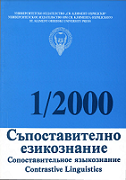
Е. Димитрова, А. Ангелов. Помагало по фонетична акомодация за гръцки студенти.
Review of: Е. Димитрова, А. Ангелов. Помагало по фонетична акомодация за гръцки студенти. Международно социолингвистически дружество. София, 1999. 59 стр.
More...We kindly inform you that, as long as the subject affiliation of our 300.000+ articles is in progress, you might get unsufficient or no results on your third level or second level search. In this case, please broaden your search criteria.

Review of: Е. Димитрова, А. Ангелов. Помагало по фонетична акомодация за гръцки студенти. Международно социолингвистически дружество. София, 1999. 59 стр.
More...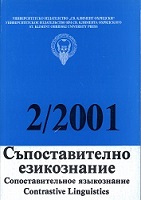
Review of: Phonological Theory and the Dialects of Italy (ed. by Lori Repetti) [Current Issues in Linguistic Theory, vol. 212]. John Benjamins Publishing Company, Amsterdam / Philadelphia, 2000. 301 стр.
More...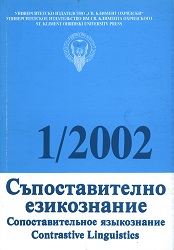
The article examines perception of Japanese word-accent in Bulgarian learners of Japanese. The main experiment of the study was carried using synthesized sound of nonsense words, in addition to which a questionnaire was used in order to find out, among other things, what exactly sound parameters the subjects used as cues during the experiment. The subjects are Bulgarians, studying Japanese in Bulgaria. The main findings may be summarized as follows: 1) Pitch remains the only reliable cue for correct recognition of Japanese word-accent 2) The pattern with a pitch-fall after the first mora is the most easily recognized, no matter what the accept-perception abilities of the subject are. 3) The pattern with no pitch-fall is the most easily recognized in subjects with high overall perception abilities. 4) The so-called ‘‘special mora” seems to distort the subjects’ judgements, being generally perceived as accented. This may be due to a certain acoustic resemblance between syllables containing a “special mora” and stressed syllables in Bulgarian.
More...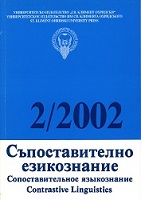
The phonemic systems of contemporary Bulgarian and Serbo-Croatian have been analysed in this paper and the similarities and differences between them have been determined. For this purpose V. A. Vinogradov’s classification of the structural differences between the two languages (1972) has been used. According to this classification, in which he gives an articulate phonological interpretation, the differences between the Bulgarian and the Serbo-Croatian phonetic systems are analysed on the basis of different systems of choice, of phonemic categories and of contextual realization and of phonemes.
More...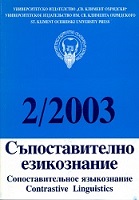
The present work deals with the recent evolution of the non-academic practice of English transliteration of Bulgarian, starting with the introduction of the Streamlined System in 1995, its subsequent progress and official endorsement, as well as its present use for electronic communication in Romanized Bulgarian, and its possible relevance to the phonetic spelling of English.
More...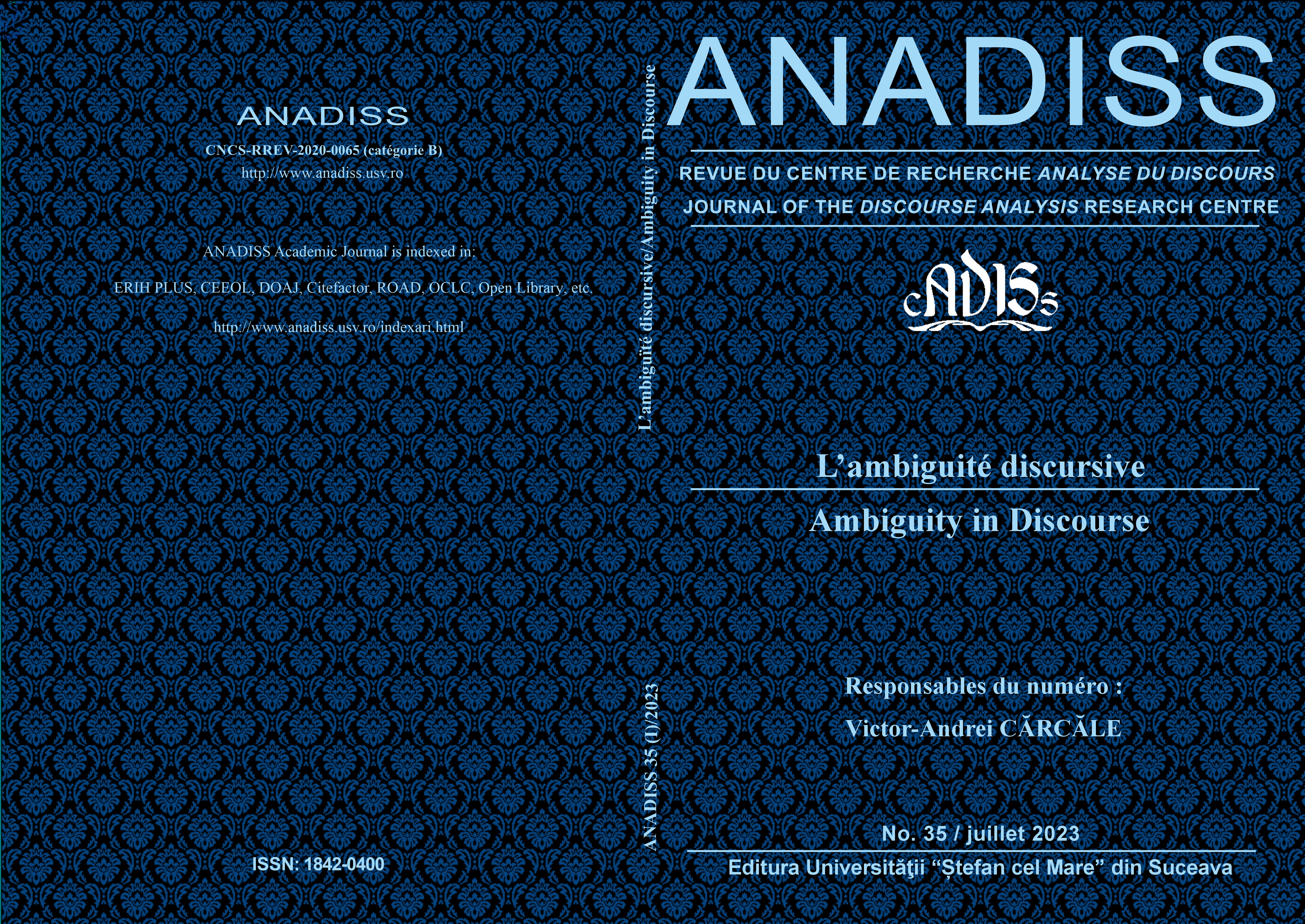
Our work aims to analyses different types of ambiguity identified in the comic strips Asterix and their role as comic procedures. The main types identified are the phonetical and lexical ones, but we can also include the defigement as a comic method which can rise some understanding problems on the part of the message receiver.
More...
This article analyses the vowel in the illative marker of monosyllabic nouns which usually copies the quality of the stem vowels. The data come from different questionnaires recorded by Soikkola Ingrian speakers in the 21st century. The main point of interest is the contradiction between the fact that the vowel in the illative marker copies the stem vowel and the fact that existing descriptions often indicate raising of mid vowels in the stem but not in the illative suffix. Both auditory analysis and acoustic measurements are used to check the correspondence between the quality of the stem and suffix vowels in the illative forms of monosyllabic nouns. The research reveals that there is both interspeaker and intraspeaker variation in the quality of the vowels under discussion, and several different strategies can be used for building the illative marker. The rounded stem vowels öö and oo are opposed to the unrounded ee: if raised in the stem, the latter does not influence the quality of the suffix vowel. In most cases, the quality of the rounded stem and suffix vowels is the same, so a transcription where these vowels are denoted differently is not justified. Pronunciations where both the stem and suffix vowels are half-raised argue for an alternative variant of the Soikkola Ingrian phonological system.
More...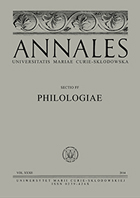
The subject of research in this article are temporal names associated with relative time, occurring in the Kujawy dialects. The research material comes from the Dictionary of dialect and culture of Kujawy and its extensive – numbering several thousand dictionary entries – file. The purpose of the analysis is to describe their motivations and meanings. A review of the names shows that native terms dominate, and that time by the Kujawiaks was not understood as a physical quantity regulated by clock hands. People living according to the rhythm of the seasons, days, liturgical calendar, used temporal names resulting from the observation of repetitive natural phenomena and related to church holidays and annual customs important for their community.
More...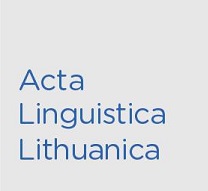
The paper deals with the formant structure of trills in the contemporary Baltic languages – Lith. [r], [rʲ] and Lat. [r]. The aim of the paper is to compare the formant structure of trills (F1, F2, F3 and F4) in prevocalic (<R>VR), intervocalic (V<R>V) and postvocalic (RV<R>) positions and its variation in the context of different vowels, to highlight the trends of formant dynamics in Lithuanian and Latvian and to determine the statistical significance of the differences. The study shows that according to the average values of the first two formants, Lat. [r] occupies an intermediate position between non-palatalized Lith. [r] and palatalized Lith. [rʲ]. Syllable position has a statistically significant influence on the first formant of trills in Lithuanian and on all four formants in Latvian. According to the results, the context of adjacent vowels has a similar influence on the formants of trills in both languages: the first formant is related to the height of the adjacent vowel, and the second and subsequent formants depend on the backness of the adjacent vowel.
More...
Dialectologists have discussed the use of the International Phonetic Alphabet (IPA) symbols for the transcription of Lithuanian dialects since 2017, the IPA collection for Standard Lithuanian was also approved in 2021, but until now, the possibilities of Aukštaitian transcription have been examined in more detail, and less attention has been paid to Žemaitian subdialects. The article addresses the questions of transcribing the Žemaitian subdialects of the Lithuanian language by the symbols of the International Phonetic Alphabet (IPA), revises certain symbols from the earlier set of the IPA symbols for the sounds of Lithuanian dialects presented in 2017 and ways of transcribing. In terms of transcribing, the system of vocalism and especially of prosody in Žemaitian subdialects is more complex than Aukštaitian; the Žemaitian pitch accents have different characteristics. These differences are most relevant when transcribing diphthongs, which are characterized by a particularly high variability. The article gives many examples of transcribing the syllables, which contain diphthongs and bear different pitch accents. After more in-depth studies on dialectal phonology are conducted in the future and more theoretical works are generalized, the transcription of Lithuanian dialects by the IPA symbols will be further revised.
More...
Review of: Dalia Kiseliunaitė: kuršių nerijos kuršininkų kalba: i dalis. Fonetika ir fonologija, Vilnius: Lietuvių kalbos institutas, 2022, 219 p. DOI doi.org/10.35321/e-pub.41.kursininku-kalba-I-dalis ISBN 978-609-411-320-8 (bendras), ISBN 978-609-411-321-5 (I dalis)
More...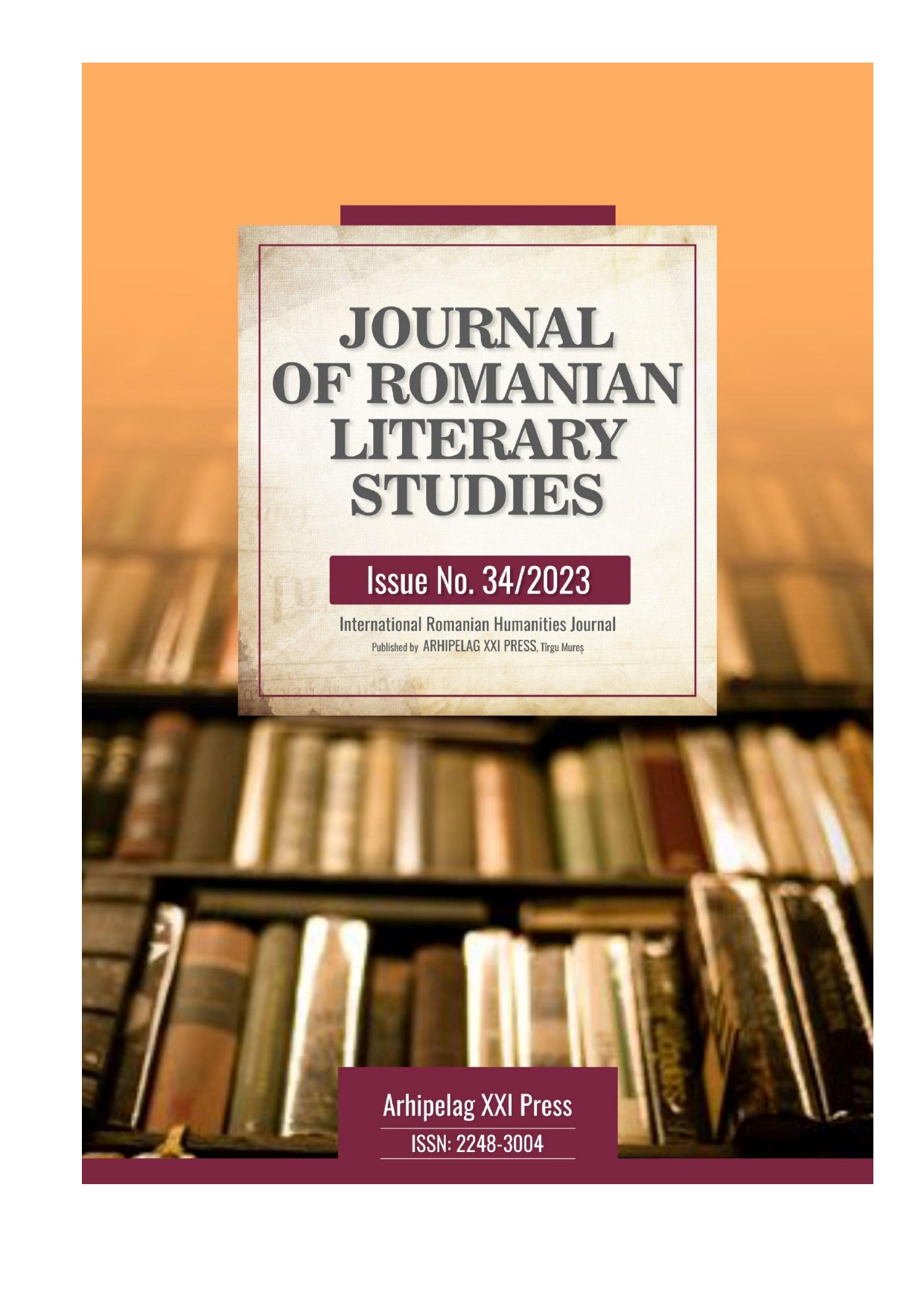
This article aims to draw attention to some of the most common difficulties experienced by students learning to write, but especially by partially bilingual Romanian speakers. Among the causes that constitute such difficulties, we identify phonetic aspects, lexical aspects and grammatical aspects. Our goal is to make those who coordinate the trainees in learning the correct use of the Romanian language aware of a series of natural challenges presented to them by verbal communication in the Romanian language. We believe that, given the existence in many schools of students who do not speak Romanian or who speak a little of this language, the aspects we have pointed out can benefit from deepening knowledge in this regard.
More...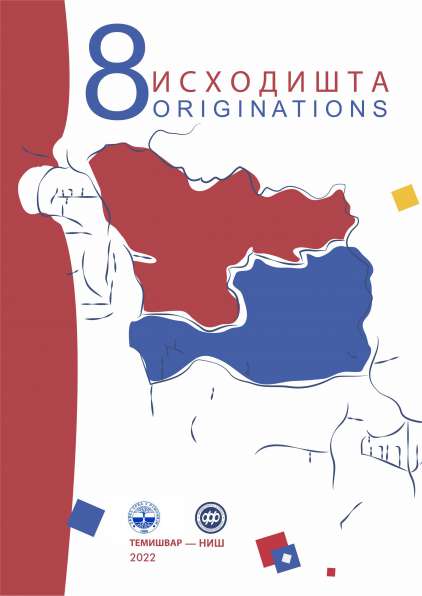
Будући да су протеклих година установљеном гушћом мрежом пунктова углавном попуњене белине на терену шумадијско-војвођанских говора у румунском Банату, у раду се на основу прелиминарних дијалектолошких извештаја представља нацрт за лингвогеографску скицу. Намера аутора је да се мапирањем одабраних дијалекатских појединости укаже на унутрашњу диференцијацију зоне те да се ови говори лингвогеографски сагледају у ширем комплексу сродних говорних типова нашег историјског Баната.
More...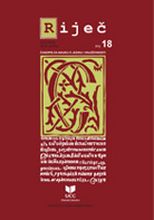
The objective of the paper is to explain the way Radovan Zogović uses stylematics and stylogenicity of phonostylistic units to achieve enhanced expressiveness in his works. After a short introduction to the stylistic peculiarities of the mentioned units, the paper focuses on examples from Zogović's oeuvre, but also from the oeuvre of other Montenegrin writers, to place the actions of this author in the context of earlier phonostylistic actions of this environment, starting with those so early that opinions are divided about their intentionality and character (like the example of Old Man Milija) to newer authors, Zogović's contemporaries. By comparing these procedures, the author (in addition to the basic conclusion that Zogović, as a proven expert in his craft and the author of a particular style described in many works by earlier authors, consciously created his own style at all linguistic and stylistic levels) concludes that, apart from the already mentioned stylistic levels and procedures, the writer also had an excessively developed palette of phonostylistic means, some of which he shares with other good authors, still giving them his own stamp, while he realizes others in his own and unique way, equally successfully.
More...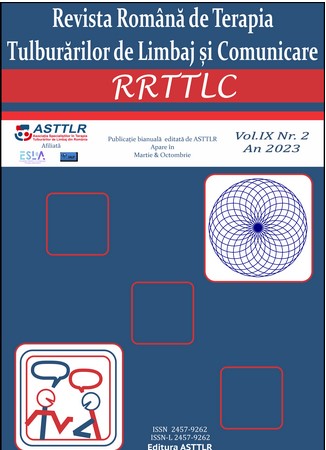
The therapeutic relationship holds an important role in the therapeutic process and has been a highly researched topic in fields such as medicine, psychotherapy, counselling or physiotherapy. More recently, the research has also focused on the therapeutic relationship in the field of speech and language therapy, presenting one of the influential factors from both a clinical and an interpersonal perspective. Considering these aspects, the present paper aims to examine the influence of the speech therapist’s empathy and the quality of the relationship with the beneficiary in relation with the efficacy in the therapeutic process. Two case studies are presented to illustrate the ability of the speech therapists to create a therapeutic relationship based on their level of empathy, that supports the children and their engagement in the rehabilitation process, an open communication, along with the therapists’ perceptions on the child’s conflict and dependency.
More...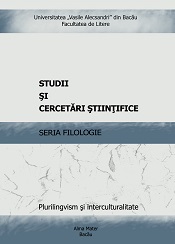
This article highlights the research that Stelian Dumistrăcel had been doing for almost three decades on Marin Preda՚s work. Our article studies the way in which the researcher discovered the voices of the characters, the paraverbal, the sonority of the archaic language of Marin Preda’s text within the thirteen articles dedicated to the writer՚s work. The linguist is concerned with the context in which the spoken tones appear and the differences in meaning of the two aspects of any word, the written and the spoken ones.
More...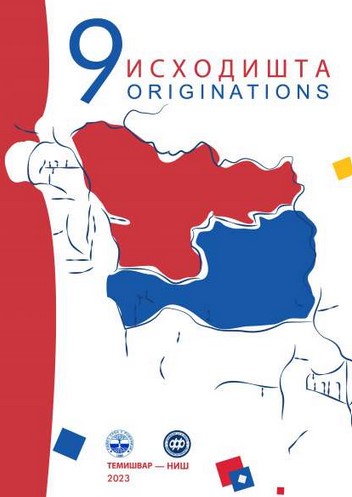
В статье анализируется терминосистема, используемая в книги М. Радана Фонетика и фонологија карашевских говорах сегодня с целью провести сравнение с соответствующими лекическими единицами в работах сербских диалектологов, напечатанных в Сербском диалектологическом сборнике. Сравнение будет показать есть ли особенности, в чем и каковы были причины.
More...
Dialects, namely vernacular speeches as a segment of intangible cultural assets represent a significant part of the identity of a group or individual, who recognize them as the very essence of their identity and as an indispensable part of its cultural heritage. Due to all kinds of lifestyle changes, especially in rural areas, dialects are in danger of a accelerated transformation and devastation, where they are still preserved, and therefore should be placed high on the list of priorities in the implementation of protection measures elements of intangible national cultural heritage (speech recording and adequate storage first, and then research of the collected material and its presentation). The dialect lexicon is an extremely important representative of the traditional material, spiritual and social culture of the Serbian people. It is important to point out the validity of ethnographic data that can be indirectly read from linguistic lexical maps. Dialect lexicon is the fundus of Serbian vernacular speeches and because of that, its notation and research should be included in the UNESCO concept of preservation, protection and sustainability of intangible cultural heritage.
More...
Although the vernaculars of the central and southern parts of the Kosovo basin and the vernacular of Kosovo Pomoravlje are geographically close to each other and belong to the Prizren-South Morava dialect, they differ significantly in terms of the inflection of declinable words – the vernaculars of Kosovo are partly analytic, while the vernaculars of Kosovo Pomoravlje are completely analytic. There are also differences in aorist and imperfect. With regard to the overall structure of their morphology, the vernaculars of Kosovo, Metohija and Sirinić regions form a unique sub-dialect within the Prizren-South Morava dialect. On the other hand, the vernaculars of Kosovo Pomoravlje are close to the ones spoken in the South Morava basin. Some common features of the vernaculars spoken in the Kosovo Basin and Kosovo Pomoravlje, which are unknown or infrequent in vernaculars of Metohija, testify that the vernaculars of Kosovo Pomoravlje were similar to the ones spoken in the Kosovo basin before large-scale migrations from the south. Here is a list of similarities..
More...
The paper presents some basic phonetic features of Serbian languages in Romania produced by speakers from Svinita: traits from the domain of vocalism (inventory and distribution), semi-vowel, syllabic l, final l, syllabic, vocal groups are reviewed, as well as certain features from the domain of consonantism. On the basis of field research carried out in September 2022, as part of the project Research on the Culture and History of the Serbs in Romania, which takes place within the Center for Scientific Research and Culture of the Serbs in Romania, funded by the Union of Serbs in Romania, the collected material was analyzed and are described in the paper and supported by examples of the characteristic phonetic features of this speech, so that it could be seen in the wider context of other speeches in the territory of Romania and Serbia.
More...